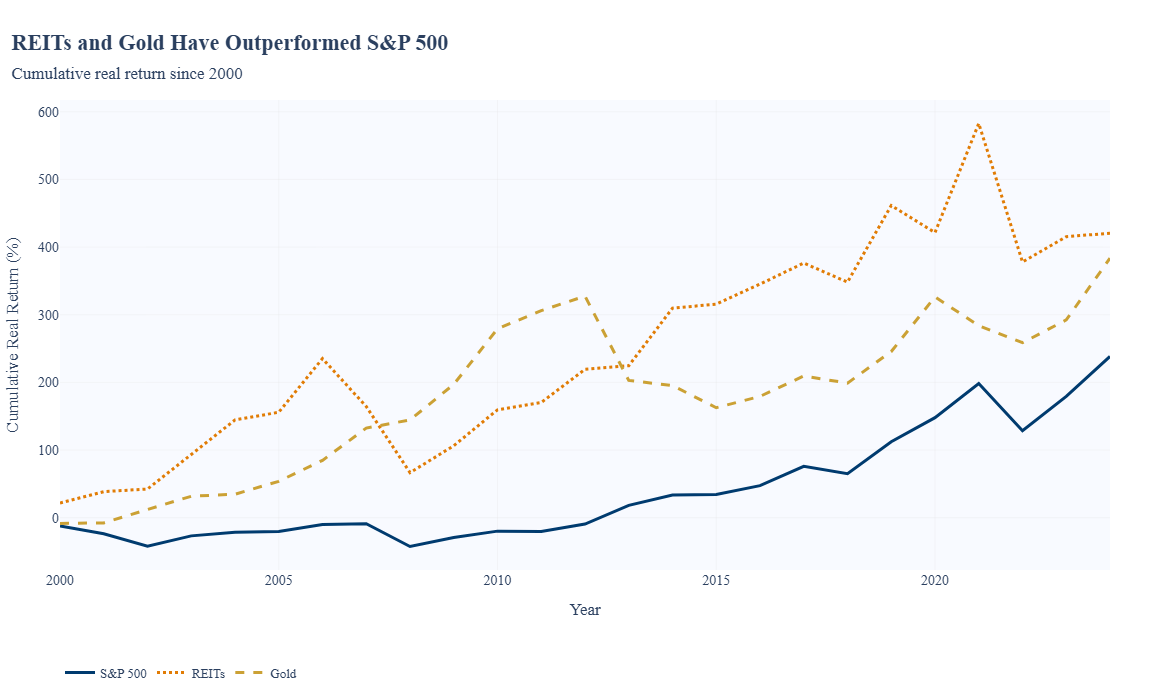Let’s rewind to Y2K. Britney was topping the charts, people were hoarding water in prep for the digital apocalypse, and U.S. stocks had just finished a blistering 1990s bull market. The S&P 500 was invincible. Or so it seemed.
But then reality hit. Tech bubble. 9/11. Two recessions. A housing collapse. Then out of the ruins a massive 15 year bull market in US stocks where the S&P 500 crushed everything in sight.
And what do we see now, a quarter century later after all the dust has settled?
Despite the all time highs in stocks, real assets like REITs and gold have both outperformed the S&P 500 since the turn of the century.
Let that sink in.
While U.S. equities have gone on an absolute heater post-2009—particularly the Magnificent 7 in recent years—the longer lens tells a more sobering tale. If you had gone all-in on SPY at the end of 1999, your returns would trail both shiny rocks and commercial property proxies.
That’s not a knock on U.S. stocks. It’s a reminder of market cycles and the power of diversification.
Recency bias will have you chasing U.S. stocks into the stratosphere. But zoom out, and the results get murkier. Gold isn’t supposed to outperform stocks, right? REITs are just for income, right?
Before someone yells that we are cherry picking the start date —yes, of course we are. The point however is that any asset class, even the premier asset class that is US stocks, can underperform other assets for long periods. Longer than most are willing to accept.
The lesson here isn’t to ditch U.S. stocks. It’s to recognize that portfolio construction is about more than chasing the hot hand. Owning a basket of global assets—stocks, bonds, and real assets—means you’re not beholden to any one regime.


